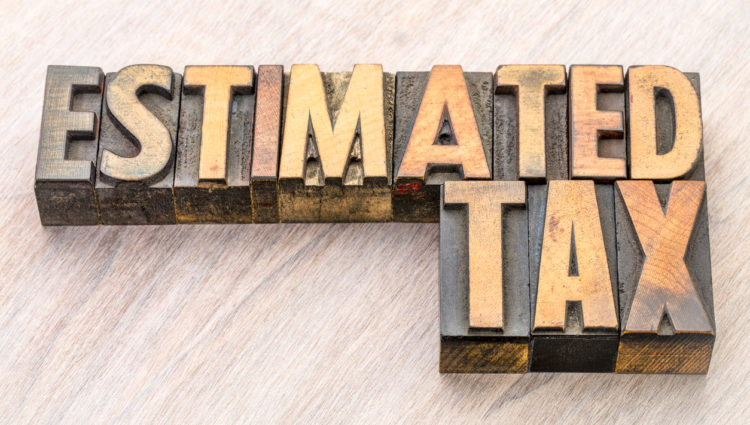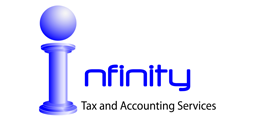- September 12, 2018
- Posted by: Hector Trevino
- Category: Finance & accounting

IRS Reminder: Third Estimated Tax Payment Due Sept. 17;
Tools are Available to Help People Pay Right Amount Following Law Changes
WASHINGTON – With tax reform bringing major changes for the current tax year, the Internal Revenue Service today reminded small businesses, self-employed individuals, retirees, investors and others who need to pay their taxes quarterly that the third estimated tax payment for 2018 is due on Monday, Sept. 17, 2018.
This is the fourth in a series of news releases aimed at helping taxpayers pay the right amount of tax, avoid an estimated tax penalty and encourage them to check their withholding now. This is part of the wider Paycheck Checkup campaign to help taxpayers, including those paying estimated taxes, avoid an unwelcome surprise at tax time.
The Tax Cuts and Jobs Act, enacted in December 2017, changed the way tax is calculated for most taxpayers, including those with substantial income not subject to withholding. Among other reforms, the new law changed the tax rates and brackets, revised business expense deductions, increased the standard deduction, removed personal exemptions, increased the child tax credit and limited or discontinued certain deductions. As a result, many taxpayers may need to raise or lower the amount of tax they pay each quarter through the estimated tax system.
Form 1040-ES, available on IRS.gov, is designed to help taxpayers figure these payments simply and accurately. The estimated tax package includes a quick rundown of key tax changes, income tax rate schedules for 2018 and a useful worksheet for figuring the right amount to pay. The IRS also mailed 1 million Form 1040-ES vouchers with instructions in late March to taxpayers who used this form last year.
A companion publication, Publication 505, Tax Withholding and Estimated Tax, has additional details, including worksheets and examples, which can help taxpayers determine whether they should pay estimated tax, such as those who have dividend or capital gains income, owe alternative minimum tax or have other special situations.
Who needs to pay quarterly?
Most often, self-employed people, including some individuals involved in the sharing economy, need to pay quarterly installments of estimated tax. Similarly, investors, retirees and others – a substantial portion of whose income is not subject to withholding – often need to make these payments as well. Other income generally not subject to withholding includes interest, dividends, capital gains, alimony and rental income.
Because the U.S. tax system operates on a pay-as-you-go basis, taxpayers are required, by law, to pay most of their tax liability during the year. For 2018, this means that an estimated tax penalty will normally apply to any party that pays too little tax — generally less than 90 percent of the tax shown on the return for the current tax year or 100 percent of the tax shown on the return for the preceding tax year — during the year through withholding, estimated tax payments or a combination of the two.
Exceptions to the penalty and special rules apply to some groups of taxpayers, such as farmers, fishermen, casualty and disaster victims, those who recently became disabled, recent retirees, and those who receive income unevenly during the year. In addition, you may avoid a penalty for underpayment of estimated taxes if you owe less than $1,000 in tax after subtracting your withholding and estimated tax payments and credits or if you did not have any tax liability for the preceding taxable year (subject to certain conditions). Generally, for the 2018 tax year, taxpayers will not have an estimated tax penalty if they make payments equal to the lesser of 90 percent of the tax to be shown on their 2018 return or 100 percent of the tax shown on their 2017 return (110 percent if their income was more than $150,000). See Form 2210 and its instructions for more information.
Employees have a choice
Many employees who also receive income from other sources may be able to forgo making estimated tax payments and instead increase the amount of income tax withheld from their pay. They can do this by claiming fewer withholding allowances on their Form W-4, based on completing the Deductions, Adjustments, and Additional Income Worksheet in the instructions section. If that’s not sufficient, on the Form W-4 they can ask their employer to withhold an additional flat-dollar amount each pay period.
Perform a ‘Paycheck Checkup’
Because of the far-reaching tax changes taking effect this year, the IRS urges all employees, including those with other sources of income, to perform a Paycheck Checkup now. Doing so now will help avoid an unexpected year-end tax bill and possibly a penalty. The easiest way to do this is to use the Withholding Calculator available on IRS.gov.
To use the Withholding Calculator most effectively, users should have a copy of last year’s tax return and recent paystub. After filling out the Withholding Calculator, the tool will recommend the number of allowances the employee should claim on their Form W-4. Though primarily designed for employees who receive wages, the Withholding Calculator can also be helpful to some recipients of pension and annuity income.
If the Withholding Calculator suggests a change, the employee should fill out a new Form W-4 and submit it to their employer as soon as possible. Similarly, recipients of pensions and annuities can make a change by filling out Form W-4P and giving it to their payer.
Employees who expect to receive long term capital gains or qualified dividends, or employees who owe self-employment tax, alternative minimum tax, or tax on unearned income of minors should use the instructions in Publication 505 to check whether they should change their withholding or pay estimated tax.
How and when to pay
For tax-year 2018, estimated tax payment due dates are April 18, June 15, Sept. 17 and Jan. 15, 2019. Taxpayers still due a refund on their 2017 federal income tax return may be able to reduce or even skip one or more of these payments by choosing to apply their 2017 refund to their 2018 estimated tax. See Form 1040 and its instructions for more information.
Taxpayers in presidentially-declared disaster areas may have more time to make these payments without penalty. Visit the Tax Relief in Disaster Situations page for details.
The fastest and easiest way to make estimated tax payments is to do so electronically using IRS Direct Pay or the Treasury Department’s Electronic Federal Tax Payment System (EFTPS). For information on other payment options, visit IRS.gov/payments. For filers paying by check, the check must be made payable to the “United States Treasury.”
More information about tax withholding and estimated tax can be found on the agency’s Pay As You Go web page as well as in Publication 505, Tax Withholding and Estimated Tax.
Contact or Visit Us Today:
1700 Old Norcross Rd. Suite 2 Lawrenceville, GA 30046
770-277-3830
THE DESTINATION FOR ALL YOUR EXPERT FINANCIAL ADVICE AND SERVICES
